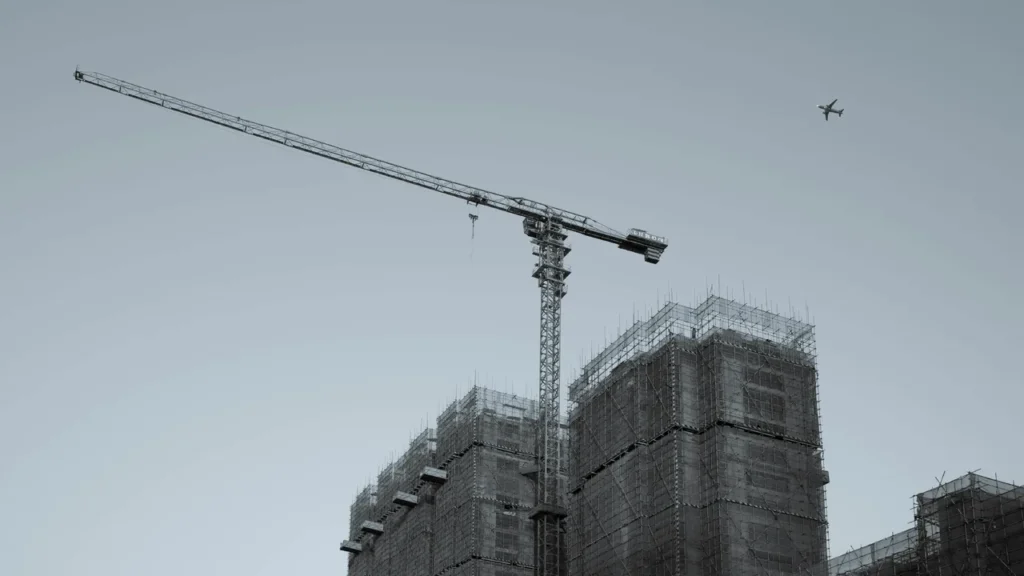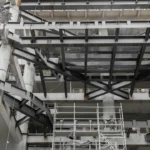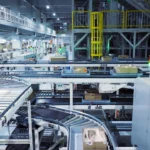Smart construction is revolutionizing the way buildings and infrastructure are designed, built, and managed. As digital transformation spreads across industries, the construction sector is adopting advanced IoT technology, automation, and AI in construction to improve safety, precision, and efficiency on site. This evolution marks the shift from manual, labor-intensive methods toward connected, intelligent systems that can make decisions in real time.
What Is Smart Construction?
Smart construction refers to the integration of digital technologies—such as sensors, robotics, artificial intelligence, and automation—across every stage of the construction lifecycle. The goal is to create a seamless flow of data between the design office, construction site, and building operation, enabling faster, safer, and more sustainable projects. By combining human expertise with machine intelligence, smart construction transforms how structures are conceived, executed, and maintained.
Evolution from Traditional to Smart Construction
For decades, the construction industry relied heavily on manual work, physical blueprints, and basic project management tools. The result was slower progress, higher error rates, and limited data visibility. With the rise of digital platforms and IoT technology, the industry began transitioning toward automation and connectivity. Today, construction sites use drones for surveying, robots for repetitive tasks, and cloud systems to coordinate workers, machinery, and materials in real time.
This digital evolution not only improves productivity but also enhances worker safety and reduces project delays. The combination of real-time data, predictive analytics, and remote control creates a new era of transparency and performance in the built environment.
IoT Technology: Connecting the Job Site
At the core of smart construction lies the Internet of Things (IoT)—a network of connected sensors and devices that collect and exchange data. On a modern construction site, IoT technology connects machinery, materials, and personnel through smart tags, wearables, and cloud-based dashboards. This connectivity turns every piece of equipment into a data point, allowing project managers to monitor progress, prevent breakdowns, and improve resource utilization.
According to the International Energy Agency (IEA), digitalization and automation in construction can reduce energy use and carbon emissions by more than 20% through smarter resource management. These innovations also help reduce downtime, improve asset life cycles, and ensure compliance with sustainability goals.
Key Applications of IoT on Construction Sites
- Equipment Tracking: IoT-enabled machines transmit performance and location data in real time, helping operators predict maintenance needs and prevent costly failures.
- Safety Monitoring: Smart helmets and wearable devices track worker movements, detect falls, and alert supervisors to hazardous conditions instantly.
- Material Management: RFID tags and automated delivery tracking reduce waste and ensure timely availability of critical components.
- Smart Buildings: IoT-integrated HVAC and lighting systems adjust automatically to occupancy and climate conditions, optimizing energy efficiency.
AI in Construction: The Brain Behind Automation
While IoT connects devices, AI in construction provides the intelligence to interpret the data and take action. Artificial intelligence is now being used for predictive analytics, cost estimation, and risk management—functions that traditionally required extensive manual calculations. Machine learning algorithms can analyze thousands of project data points to forecast delays, optimize scheduling, and prevent resource bottlenecks.
In design and planning, AI supports Building Information Modeling (BIM) by identifying conflicts in structures before construction begins. On site, autonomous drones equipped with computer vision can inspect buildings for quality control, while AI-powered robots assist with repetitive or dangerous tasks such as bricklaying, welding, and concrete pouring. This synergy between IoT data and AI-driven analytics forms the foundation of smart construction.
Case Studies of AI Integration
Several global companies have already demonstrated the tangible benefits of AI in construction. For instance, predictive models are now being used to forecast weather disruptions and adjust work schedules automatically, minimizing lost time. Autonomous equipment like self-driving excavators and cranes are improving site productivity while reducing the need for manual intervention.
Computer vision systems powered by AI can detect safety violations in real time by scanning live camera feeds. They flag workers without proper protective gear or identify risky behaviors before accidents occur. These intelligent tools not only boost productivity but also elevate safety standards across the entire project lifecycle.
Automation and Robotics on Site
The most visible side of smart construction is automation—the use of robotics and programmable machinery to perform physical tasks traditionally handled by humans. Robotic bricklayers, 3D concrete printers, and drone-based surveyors are transforming job sites into hubs of precision and consistency. These systems operate 24/7, ensuring higher productivity and reducing human fatigue.
Automation also enables consistency in quality and measurement accuracy. Robots can follow precise digital blueprints down to the millimeter, minimizing waste and rework. By linking these robots to IoT-based monitoring systems, construction firms can track progress remotely and adjust workflows instantly if deviations are detected.
Balancing Human Skills with Automation
Even with the growing presence of machines, human expertise remains vital in smart construction. Engineers and supervisors interpret data, set objectives, and ensure ethical standards are maintained. Rather than replacing workers, automation acts as a multiplier—augmenting human capacity and eliminating repetitive, dangerous tasks. The result is a safer, more efficient, and knowledge-driven workforce that collaborates with intelligent tools to achieve superior results.
Benefits of Smart Construction
The implementation of smart construction brings measurable improvements across the entire building lifecycle. By combining IoT technology with AI in construction, projects become more predictable, cost-efficient, and environmentally responsible. The data gathered through connected devices provides valuable insights that help stakeholders make faster, smarter decisions.
- Efficiency Gains: Digital monitoring reduces idle time, optimizes equipment use, and shortens project delivery schedules.
- Safety Improvements: Automation minimizes human exposure to hazardous environments, while real-time alerts prevent on-site accidents.
- Sustainability: Smart systems help monitor fuel consumption, control emissions, and reduce material waste—aligning with global green building standards.
- Data-Driven Decision Making: Every sensor and device becomes a data source for improving performance and long-term maintenance planning.
Quantifiable Results
Studies show that adopting smart construction practices can improve project productivity by up to 25% and reduce rework costs by nearly 30%. The integration of IoT technology for asset tracking and site analytics can cut equipment downtime by more than 40%. Below is a simplified comparison between traditional and smart construction methods:
| Aspect | Traditional Construction | Smart Construction |
|---|---|---|
| Project Monitoring | Manual progress reports, limited visibility | Real-time dashboards, automated updates |
| Safety Management | Reactive safety response | Predictive alerts using IoT wearables |
| Resource Utilization | Inconsistent material tracking | Automated inventory and usage optimization |
| Decision Making | Experience-based, delayed feedback | AI-driven, data-backed insights |
Challenges and Future Outlook
While the advantages of smart construction are evident, its implementation is not without challenges. The initial investment in sensors, automation systems, and training can be substantial, particularly for small and mid-sized contractors. Data management is another hurdle, as terabytes of information generated by IoT technology must be stored, analyzed, and secured effectively.
Cybersecurity has also emerged as a critical concern. Since smart construction sites rely on interconnected devices, any breach can disrupt operations or compromise sensitive project data. Furthermore, the human element—resistance to change—often slows down adoption. Many traditional workers are hesitant to rely on machines or software they don’t fully understand, emphasizing the need for structured training programs and clear digital transformation strategies.
Overcoming Barriers
- Investment Planning: Gradual adoption and phased rollouts can reduce financial pressure and demonstrate early ROI.
- Training and Upskilling: Educating workers on digital tools ensures smoother transitions and sustained efficiency gains.
- Data Security Frameworks: Implementing encrypted communication and multi-layer authentication safeguards construction networks.
- Collaboration with Tech Partners: Partnering with IoT providers, AI startups, and automation specialists accelerates innovation.
The Future of Construction: Fully Connected Sites
The next decade will witness a full transformation toward autonomous and connected construction ecosystems. Imagine a project site where drones scan the terrain every morning, AI algorithms generate optimized daily schedules, and robotic machinery executes tasks with millimeter accuracy—all coordinated through IoT technology linked to a central cloud system. This vision represents the future of smart construction.
Emerging innovations such as digital twins, augmented reality (AR), and 5G connectivity will elevate these capabilities even further. Digital twins allow real-time virtual replicas of physical structures, enabling predictive maintenance and design optimization. Meanwhile, 5G networks will empower instant data transfer between thousands of connected devices, eliminating latency in operations and safety systems.
Integrating AI, IoT, and Sustainability
The convergence of AI in construction, automation, and sustainability is creating a new paradigm for the industry. Intelligent algorithms analyze sensor data to improve energy efficiency, schedule maintenance, and reduce carbon emissions. Construction companies can now simulate entire projects before breaking ground, identifying potential design flaws and material inefficiencies long before they occur.
Moreover, as governments push for greener building codes, smart construction methods provide a direct pathway to compliance. Predictive maintenance ensures machines operate at optimal efficiency, while digital supply chains reduce waste and transport emissions. This synergy between technology and sustainability marks the beginning of a new construction era defined by data, innovation, and responsibility.
Economic and Social Implications

Beyond efficiency and sustainability, smart construction delivers strong economic and social benefits. Automation and digitalization generate new opportunities for skilled workers—such as data analysts, BIM coordinators, and robotics technicians. This shift fosters a more inclusive and knowledge-driven industry where human creativity is complemented by machine intelligence.
Economically, companies adopting IoT technology and AI in construction are achieving higher margins through better risk management and reduced rework. Governments also benefit from improved infrastructure quality, faster delivery of public projects, and long-term cost savings through predictive maintenance programs. The ripple effect extends to communities, with safer sites and cleaner, more energy-efficient buildings.
Conclusion
The rise of smart construction represents a defining shift in how humanity builds its future. By integrating AI in construction, IoT technology, and automation, the industry is entering an age of intelligent collaboration between humans and machines. The benefits are undeniable—greater safety, sustainability, productivity, and transparency across every phase of development.
While challenges like cybersecurity, cost, and training remain, the direction forward is clear. Smart construction isn’t just a trend—it’s the foundation of the next industrial revolution. As technology continues to evolve, construction sites will become safer, faster, and more sustainable than ever before—building not just structures, but a smarter world for generations to come.



